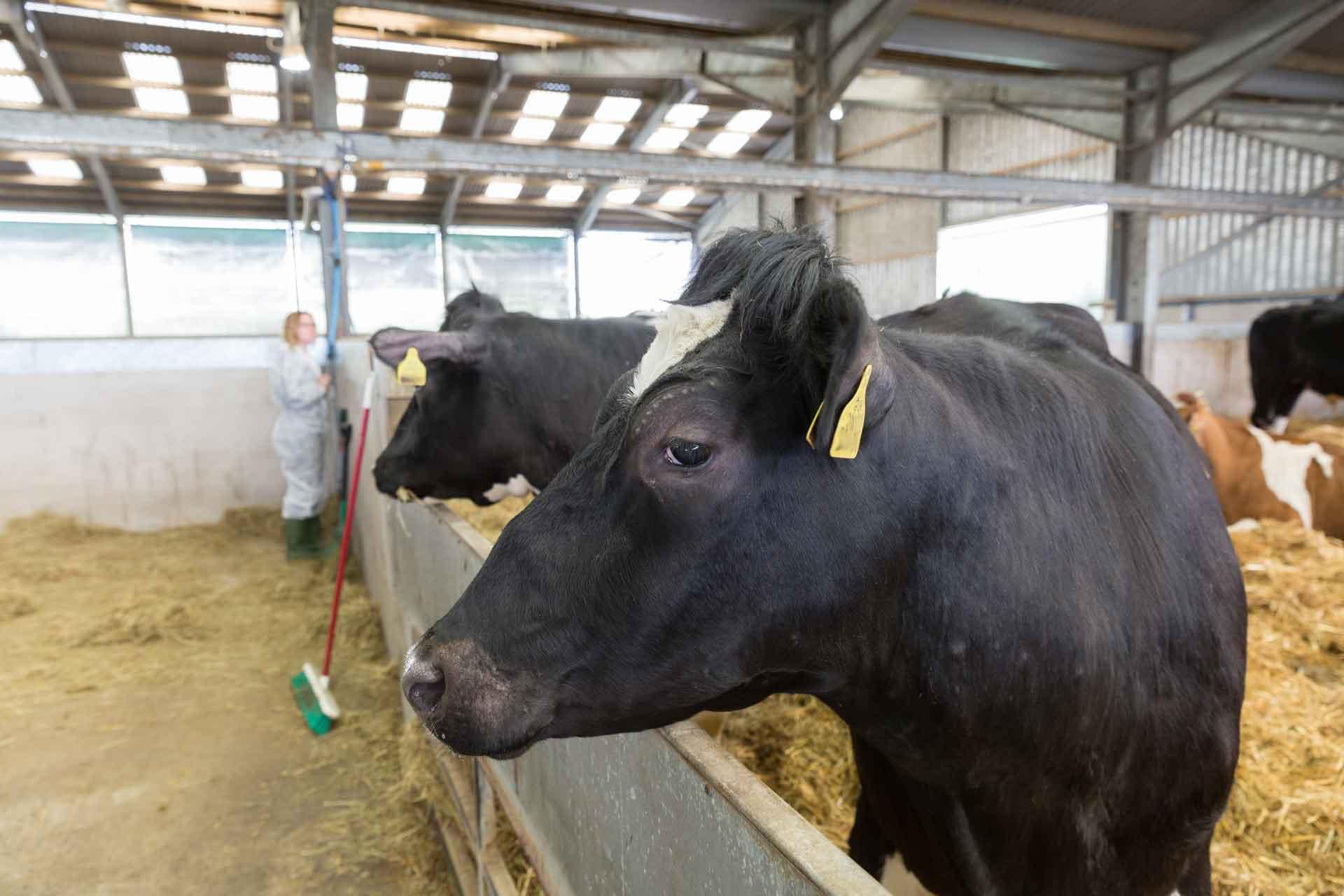Understanding how long a disease can be transmitted for is a cornerstone in preventing and controlling outbreaks, particularly when there is more than one route of infection. Scientists at The Pirbright Institute and Wageningen Bioveterinary Research have demonstrated that environments contaminated with foot-and-mouth disease virus (FMDV) could potentially infect animals up to 14 days after removing infected cattle, providing evidence that should lead to more effective outbreak containment methods.
While FMDV is spread through direct contact between animals, the virus can also survive on surfaces for prolonged periods of time. Animals that move into contaminated areas can then become infected even after the original infected animal has been removed. Quantifying how this could affect transmission is essential for implementing appropriate biosecurity measures.
The collaborative study, published in mBio, introduced uninfected cows to an environment that infected cows had previously occupied. Seven out of ten uninfected animals developed clinical signs of FMDV as a result of the environmental contamination. The team established that while infectious virus is typically present in the secretions and excretions of infected cattle for 4-5 days, infectious virus can persist in the environment for up to 14 days.
As well as establishing transmission time frames, the study provides valuable data about the relationship between virus levels in the environment and the likelihood of animals becoming infected. This provides information for risk assessors and risk managers on how soon disinfection procedures need to be implemented in order to reduce the risk of transmission from a contaminated environment.
Researchers also found the cows could shed virus into the environment before they even displayed clinical signs, and that this could cause infection if animals were exposed to the contaminated area. Importantly, this highlights there is a risk of environmental transmission even before FMD is clinically apparent in cattle, and that any spaces and locations occupied by animals both prior to and after development of clinical signs should be decontaminated to prevent disease spread.
Dr Claire Colenutt, first author of the publication, said: “Our study illustrates the importance of restrictions on animal movement during outbreaks and rigorous disinfection of areas where infected animals have been housed. Our results also support the current EU Directive, which requires 21 days between disinfection of an FMD contaminated space and repopulation with susceptible species. This, in addition to other control measures such as movement restrictions and vaccination, could help prevent the spread of FMD in livestock herds.”
The study also adds to the evidence that environmental sampling can be used to detect FMDV on infected premises, and could be used to measure the effectiveness of decontamination procedures. Understanding environmental transmission is crucial for informing effective control procedures, not just for FMD, but for other diseases where environmental transmission forms a part of their spread, such as bovine tuberculosis, avian influenza and noroviruses. It also highlights the need to consider the role played by all potential transmission routes for new and emerging pathogens, such as COVID-19.
This study was funded by the Department for the Environment, Food and Rural Affairs (Defra) and the Biotechnology and Biological Sciences Research Council, part of UK Research and Innovation (BBSRC UKRI).
